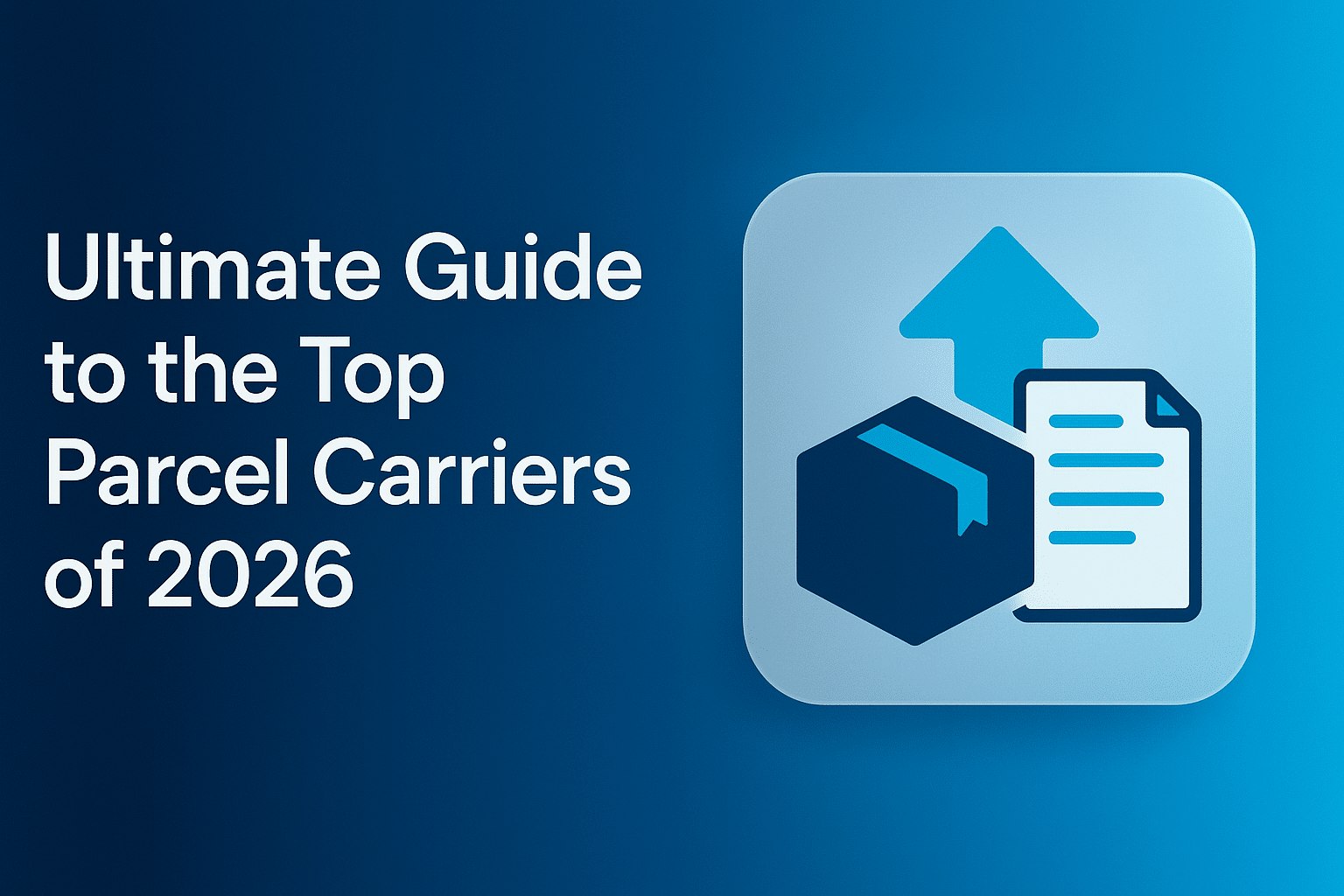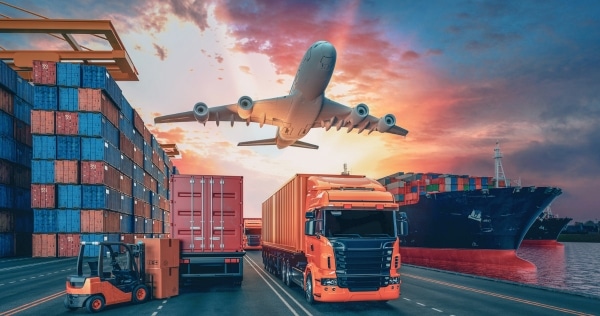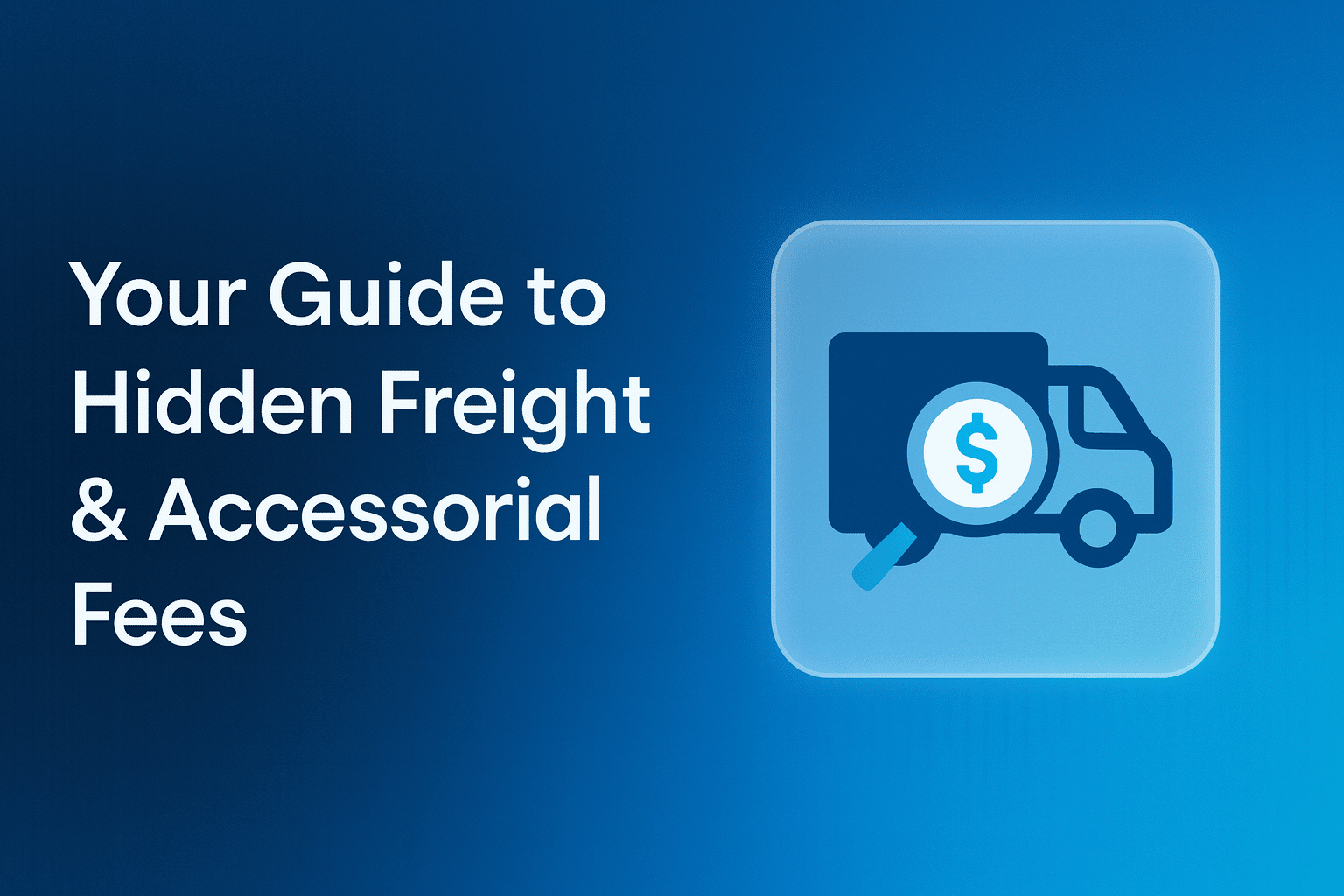The global parcel delivery landscape is undergoing unprecedented transformation as we approach 2026. With the parcel delivery market projected to reach USD 700 billion by 2030, leading carriers are investing heavily in technology, sustainability, and capacity expansion to meet evolving consumer expectations. From AI-powered route optimization to electric vehicle fleets, the top parcel carriers of 2026 will be defined by their ability to adapt to rapid changes in online shopping patterns and delivery speed requirements.
This comprehensive analysis examines the major players reshaping global delivery, their strategic investments, and the innovations driving competitive advantages in an increasingly crowded marketplace. As delivery volume balloons during peak periods and same-day delivery becomes standard, understanding which carriers lead in technology adoption, customer experience, and sustainable logistics is crucial for businesses and consumers alike.
Key Takeaways
- Global parcel delivery market projected to reach USD 700 billion by 2030, with major carriers like FedEx, UPS, and DHL leading the transformation.
- Technology adoption—including AI, IoT, and autonomous delivery systems—will differentiate top carriers in 2026.
- Sustainability initiatives and electric vehicle fleets are becoming crucial competitive advantages.
- US market valued at USD 110 billion in 2024, expected to reach USD 170 billion by 2033 with a 5.8% CAGR.
- Peak season delivery volumes increase by 40% during holidays, with 2.3 billion packages projected for the 2026 peak season.
Top Global Parcel Carriers in 2026
The global parcel delivery market continues to be dominated by established players who have successfully adapted to digital transformation, while new entrants gain traction through innovative approaches. FedEx maintains its position as a revenue leader with annual global revenues exceeding $90 billion, leveraging its Memphis “SuperHub” and its automated package sorting capabilities that handle millions of parcels daily. The company’s strength lies in express air services and international coverage spanning over 220 countries.
UPS follows closely with revenues surpassing $80 billion, distinguished by its ability to handle heavyweight parcels up to 150 lbs and provide comprehensive supply chain solutions. The company is investing over $400 million through 2028 in network automation and digital scalability, positioning itself strongly for continued national growth.
DHL Express dominates the international segment with revenues of $25+ billion, excelling in cross-border, time-critical shipments and customs brokerage services. Their global network and specialized documentation capabilities make them the preferred choice for businesses requiring regulatory compliance across international markets.
China Post leads in sheer volume, handling billions of packages annually within the massive domestic Chinese market. Its investments in automation and logistics infrastructure support the world’s largest e-commerce ecosystem.
The competitive landscape also includes regional specialists who are rapidly expanding. New York-based Veho has gained significant market share by focusing on customer experience and achieving a 99%+ on-time delivery rate. Veho partners with major e-commerce platforms and online retailers, demonstrating how technological innovation can disrupt traditional logistics providers.
| Carrier | Global Revenue | Key Strengths | Coverage |
| FedEx | $90+ billion | Express air, international | 220+ countries |
| UPS | $80+ billion | Heavy parcels, supply chain | Global/national |
| DHL Express | $25+ billion | Cross-border, customs | Global focus |
| China Post | Volume leader | Domestic scale, automation | China + international |
| Veho | Growing regional | Customer experience, technology | 50+ US markets |
United States Market Leaders
The US parcel delivery market, valued at USD 110 billion in 2024, showcases intense competition between traditional carriers and emerging players. FedEx and UPS continue dominating through advanced technology integration and extensive networks, while maintaining their focus on improving customer satisfaction through service reliability and delivery speed.
USPS remains vital for lightweight, inexpensive shipments and rural coverage, operating as a quasi-government entity with comprehensive PO box services. Despite facing financial challenges, USPS handles a majority of US parcel volume due to its economy pricing model and universal service mandate.
DHL maintains strong international shipping leadership, particularly excelling in cross-border express services. While smaller in the US domestic market, DHL’s expertise in international regulatory compliance makes it indispensable for global trade.
The most significant disruption comes from emerging players like Veho, which has gained significant market share through its focus on customer experience and rapid geographic expansion. Other notable regional carriers include LaserShip/OnTrac, which merged to create a gig platform serving coastal markets, and Better Trucks, which is expanding its Midwest presence with a hybrid fleet targeting next-day and two-day delivery.
Amazon Logistics continues blurring the line between merchant and carrier, delivering its own packages while selectively offering third-party logistics services. Its investment in robotics-infused fulfillment centers and regional sort centers enables it to achieve same-day delivery in major metropolitan areas.
Technology Innovations Driving Carrier Success
AI and Machine Learning Integration
Artificial intelligence and machine learning are the most significant technological advancements for top parcel carriers in 2026. With 73% of consumers prioritizing fast delivery, carriers are investing heavily in AI-powered route optimization systems that analyze real-time data to predict delivery times and enhance customer satisfaction. These systems enable dynamic routing that minimizes delays and fuel consumption while maximizing efficiency. Veho, for example, deploys sophisticated algorithms that automatically adjust routes based on traffic patterns and weather, helping it achieve on-time delivery rates exceeding 99%.
Automated sorting facilities represent another crucial innovation, with major carriers increasing throughput by 50-100% in their primary hubs. FedEx’s Memphis SuperHub exemplifies this, using AI-powered systems to sort millions of packages daily with unprecedented accuracy.
Autonomous Delivery Systems
Autonomous delivery is transitioning from pilot programs to operational reality. Drone delivery services are expanding, with major carriers deploying unmanned aircraft for final-mile deliveries in suburban and rural markets. Self-driving delivery vans represent the next frontier, and while fully autonomous vehicles remain limited, semi-autonomous systems already assist drivers with navigation and delivery optimization.
IoT-enabled parcel tracking provides real-time visibility throughout the supply chain. Smart sensors monitor package condition and location, allowing customers to track shipments with unprecedented precision.
Sustainability and Environmental Leadership
For top parcel carriers in 2026, sustainability has evolved from a competitive differentiator to an operational necessity. With 57% of consumers preferring companies with green practices, major carriers are making substantial investments in sustainable logistics. Electric vehicle fleets are the most visible investment. FedEx has pledged $2 billion toward carbon-neutral operations by 2040, and UPS is expanding its alternative fuel and electric vehicle fleet, particularly in dense urban routes.
DHL leads in sustainable innovation with comprehensive programs covering renewable energy and sustainable packaging. Emerging carriers like Veho incorporate sustainability from their founding, using electric and hybrid vehicles where feasible. This shift also drives technological innovation, as carriers leverage AI-driven route optimization to reduce fuel consumption and warehouse automation to minimize energy usage, creating both environmental and financial benefits.
Market Performance and Growth Metrics
The global parcel delivery market reached USD 340 billion in 2022 and continues expanding at a projected 9.4% CAGR through 2030. This growth reflects fundamental changes in consumer behavior, with online shopping driving unprecedented demand.
Volume growth analysis reveals striking patterns, particularly during peak seasons when delivery volumes increase by 40%. The holiday shopping season is a critical test, with a projected 2.3 billion packages during the 2026 peak season requiring sophisticated capacity management and flexible staffing models.
Investment priorities focus on infrastructure, technology, and capacity expansion. Customer satisfaction metrics, such as delivery window accuracy and communication quality, increasingly drive carrier performance. Companies achieving 99%+ on-time rates often outperform competitors by 40% on customer retention.
Regional Market Analysis
Asia-Pacific Leaders
The Asia-Pacific region dominates global parcel volume, led by China Post’s massive domestic market. China Post handles billions of packages annually, supported by extensive automation and partnerships with e-commerce platforms. Japan Post Group maintains a strong regional presence through its comprehensive domestic network and focus on service reliability.
European Market Champions
Deutsche Post DHL dominates European international express services through its extensive network and expertise in cross-border logistics. Royal Mail (UK) and La Poste Group (France) maintain strong domestic networks while expanding their international capabilities through strategic partnerships.
Capacity Expansion and Infrastructure Development
Capacity expansion is a critical strategy for carriers preparing for continued growth. Veho exemplifies this trend by expanding parcel sorting capacity by over 50% in key markets like Newark, Boston, and Chicago for 2026, demonstrating how emerging carriers can scale to compete. Carriers are also developing new 150,000+ sq. ft. regional hubs near major metropolitan areas to enable next-day and two-day delivery services.
Partnerships with third-party logistics providers allow carriers to expand their delivery footprints without massive capital investments. The development of flexible staffing models, such as using independent van companies and gig economy drivers, is also crucial for scaling capacity during high-volume periods like the holiday shopping season. This hybrid approach allows carriers to maintain core capacity while expanding rapidly when demand increases.
Future Outlook for 2026 and Beyond
The future of parcel delivery will be defined by innovation in last-mile efficiency and customer experience. Successful carriers will be those that most effectively integrate advanced technologies with sustainable operations. Technology integration will accelerate, with autonomous vehicles and AI-powered quality control systems becoming more prevalent.
Sustainability will transition from a competitive advantage to an operational requirement. Market consolidation and strategic partnerships are also expected to increase as smaller carriers seek scale advantages. Ultimately, success will require operational excellence and a relentless focus on customer experience, as consumers develop higher expectations for delivery speed, communication, and reliability.
FAQ
What criteria determine the top parcel carriers in 2026?
Top carriers are ranked based on market share, geographic coverage, technology adoption, sustainability initiatives, delivery speed, customer satisfaction scores, and financial performance. The most successful carriers excel across multiple dimensions.
How are emerging technologies changing the competitive landscape?
AI and machine learning optimize routing and predict delivery times, while autonomous systems like drones and self-driving vehicles reduce costs. IoT enables real-time tracking, giving carriers who invest in these technologies a significant competitive advantage.
Which carriers are leading in sustainability initiatives for 2026?
FedEx and UPS are making major investments in electric vehicle fleets. DHL leads in comprehensive sustainable logistics, while newer carriers like Veho incorporate green practices from their founding.
How is peak season capacity affecting carrier rankings?
Peak season performance is crucial, as delivery volumes can increase by 40%. Carriers that can efficiently expand capacity to handle the projected 2.3 billion packages during the 2026 peak season will gain market share.
What regional differences exist among top parcel carriers?
China Post dominates Asia, Deutsche Post DHL leads in European international services, and FedEx and UPS control much of the North American market. Regional carriers often excel in specific markets due to local knowledge, but global carriers maintain advantages in international shipping.





